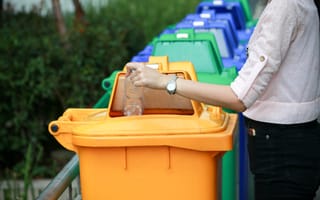Waste management is getting an IoT makeover in San Francisco. Nordsense, an AI startup, has announced in a press release that it has secured a contract with the City of San Francisco to optimize waste collection across the city.
According to the statement, Nordsense will install 1,000 multi-point reference sensors in trash bins along major commercial corridors beginning this spring. Sensors will gather data on bin fullness, temperature, fill rates and other activity in order to identify waste generation patterns. The city plans to use this data to mitigate container overflow, cut down the number of overall collections, steer bin placement and optimize operational resources.
“The pilot program showed us firsthand the benefits of the sensor technology to improve cleanliness on our city’s streets, and we’re looking forward to implementing the expansion. The partnership with Nordsense will allow us to use real-time data to better service the public trash cans and deploy resources more strategically.”
“The pilot program showed us firsthand the benefits of the sensor technology to improve cleanliness on our city’s streets, and we’re looking forward to implementing the expansion,” said San Francisco Public Works Director Mohammed Nuru. “The partnership with Nordsense will allow us to use real-time data to better service the public trash cans and deploy resources more strategically.”
Nordsense’s machine learning-powered platform analyzes waste generation patterns in specific locations and makes data-based predictions about activity to prevent overflow and optimize collections.
“In most American cities, waste collection is handled in much the same way it was 100 years ago, with inflated costs, a substantial CO2 footprint and service that isn’t closely aligned with variable demand,” said Anders Engdal, CEO of Nordsense. “Our partnership with the City of San Francisco is aligned with San Francisco’s Sustainable City initiative and is an important component of its vision for the reduction of waste. The primary goals are to improve services to citizens, make the city cleaner, reduce the number of public complaints, understand where more bins are needed and where bins can be removed, as well as reduce the number of overall collections.”



